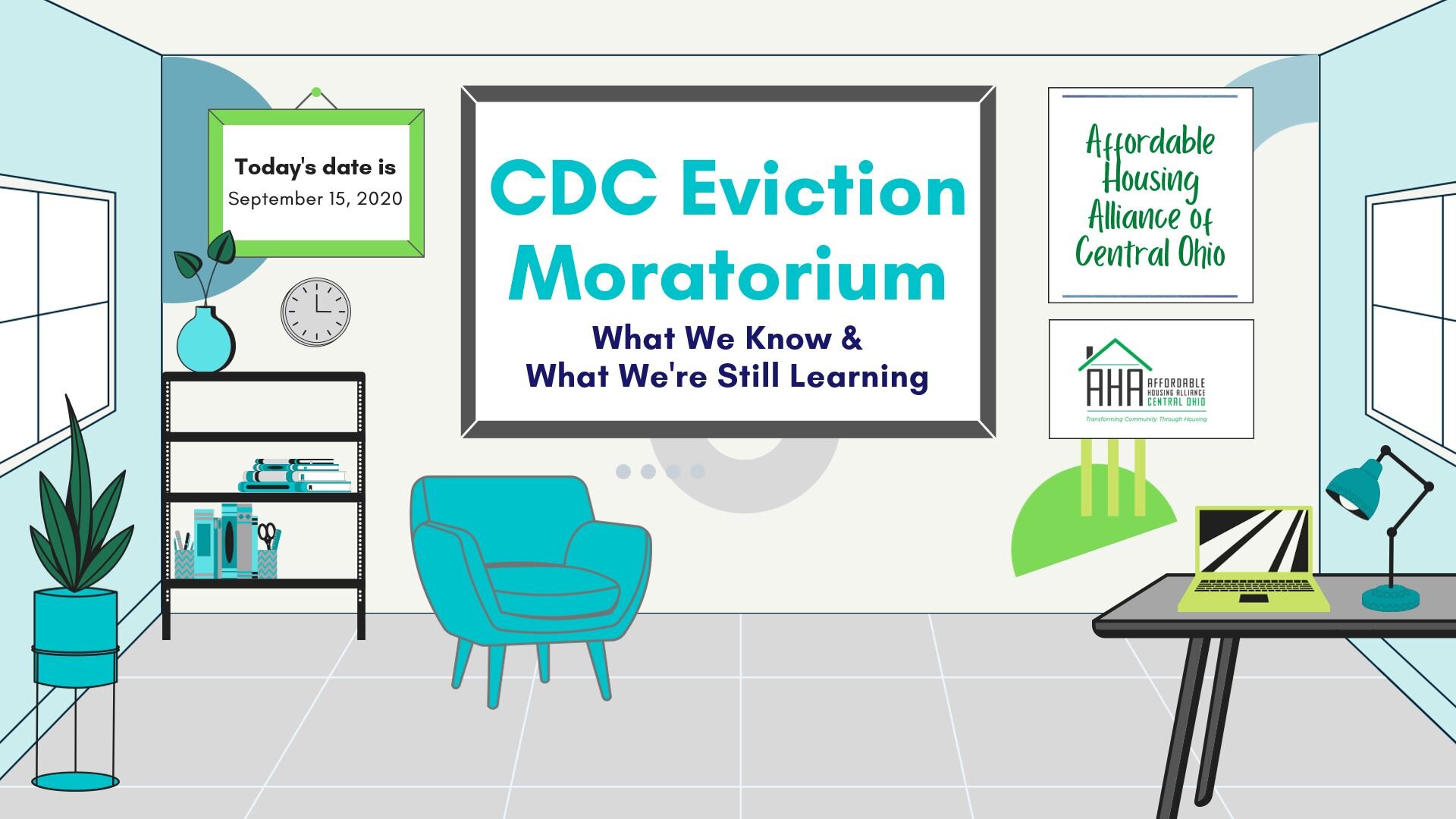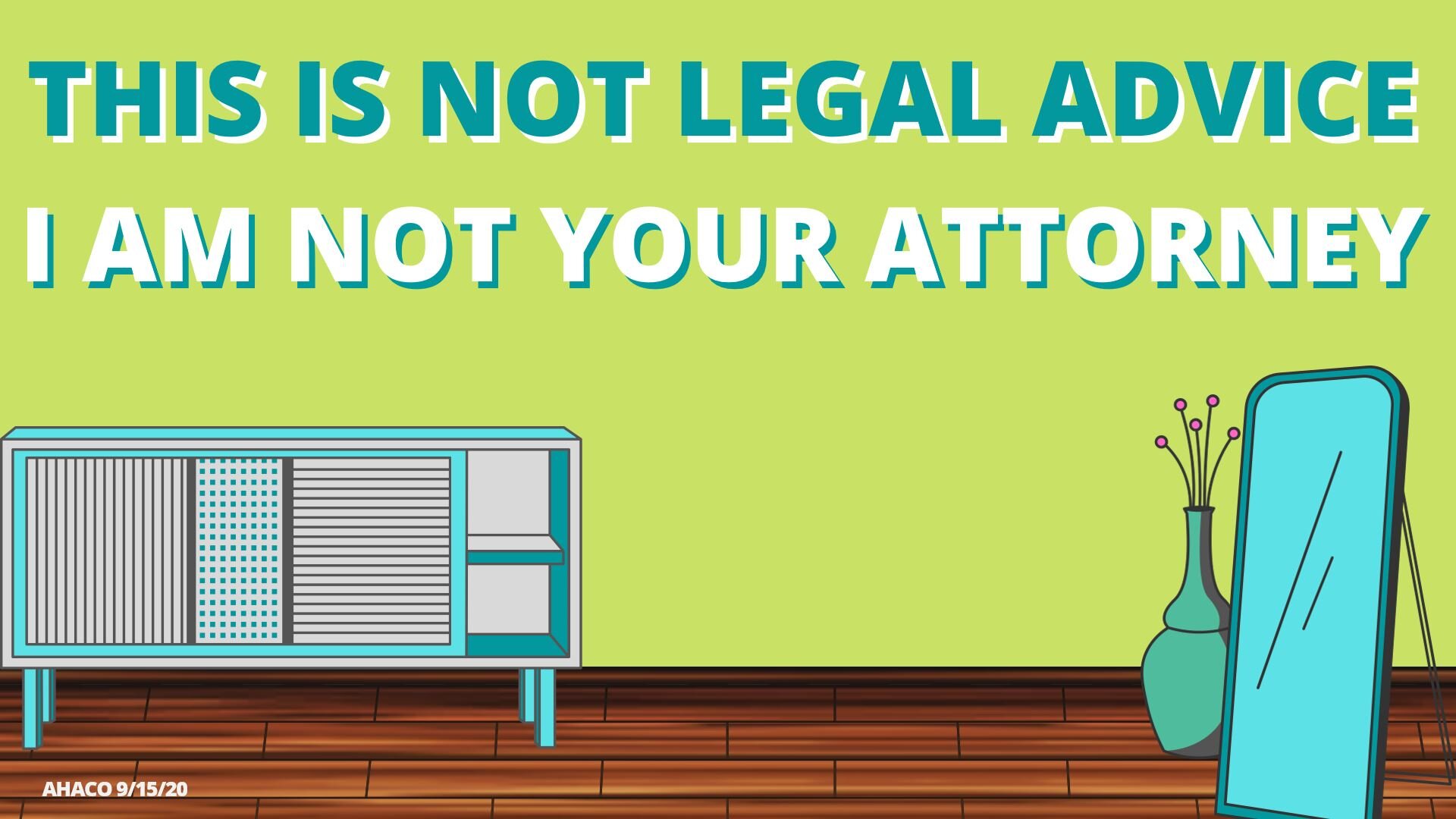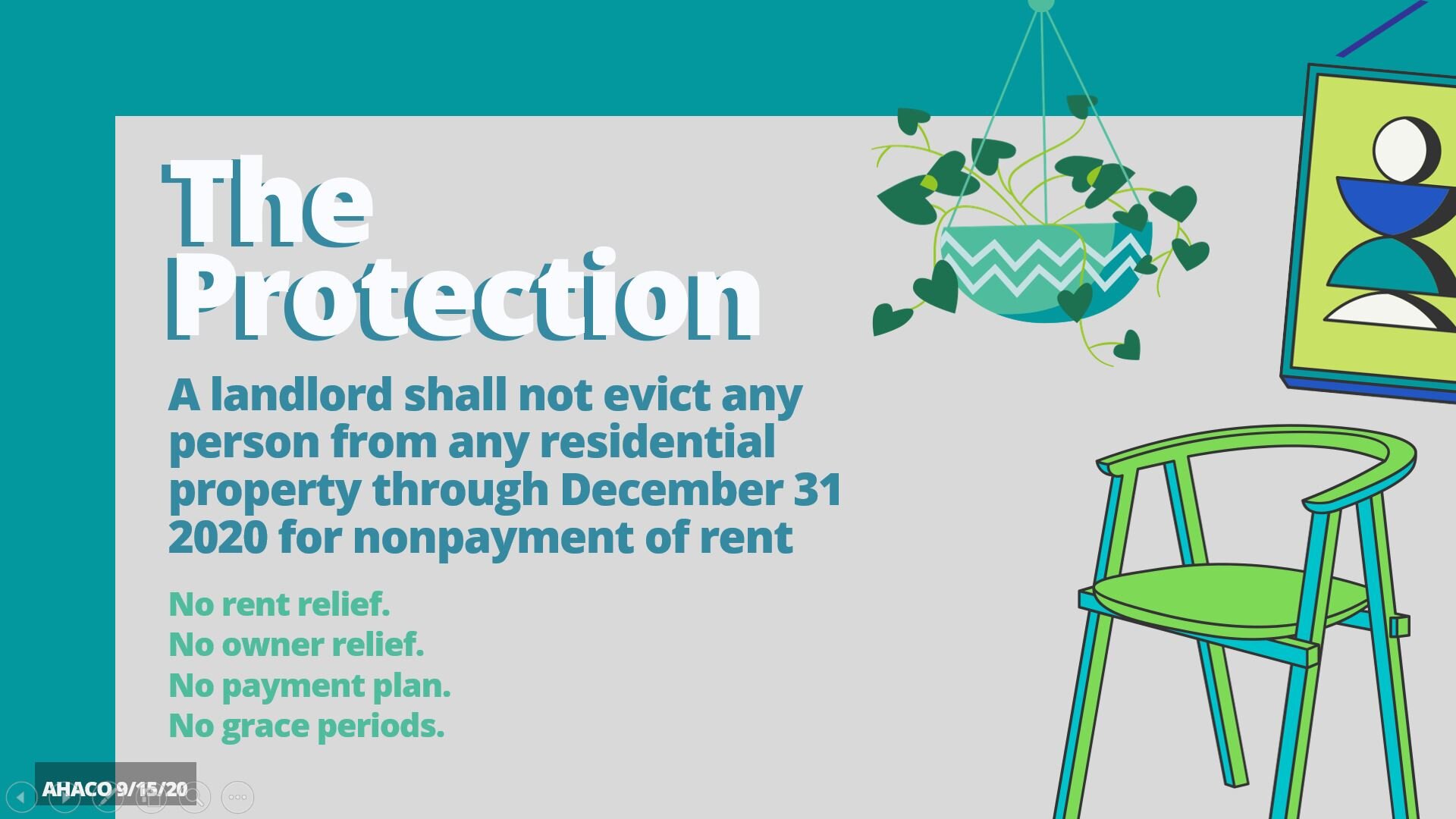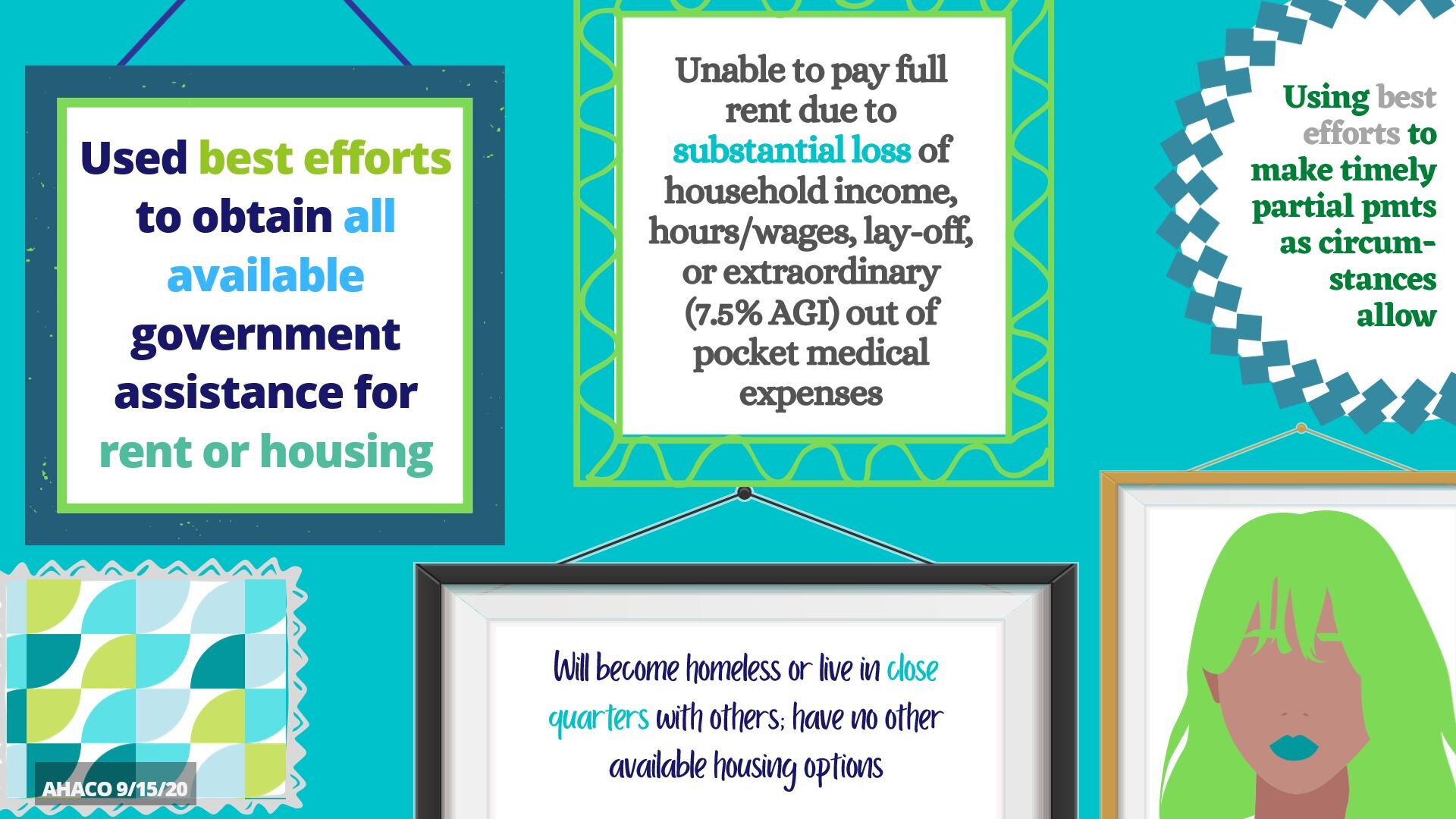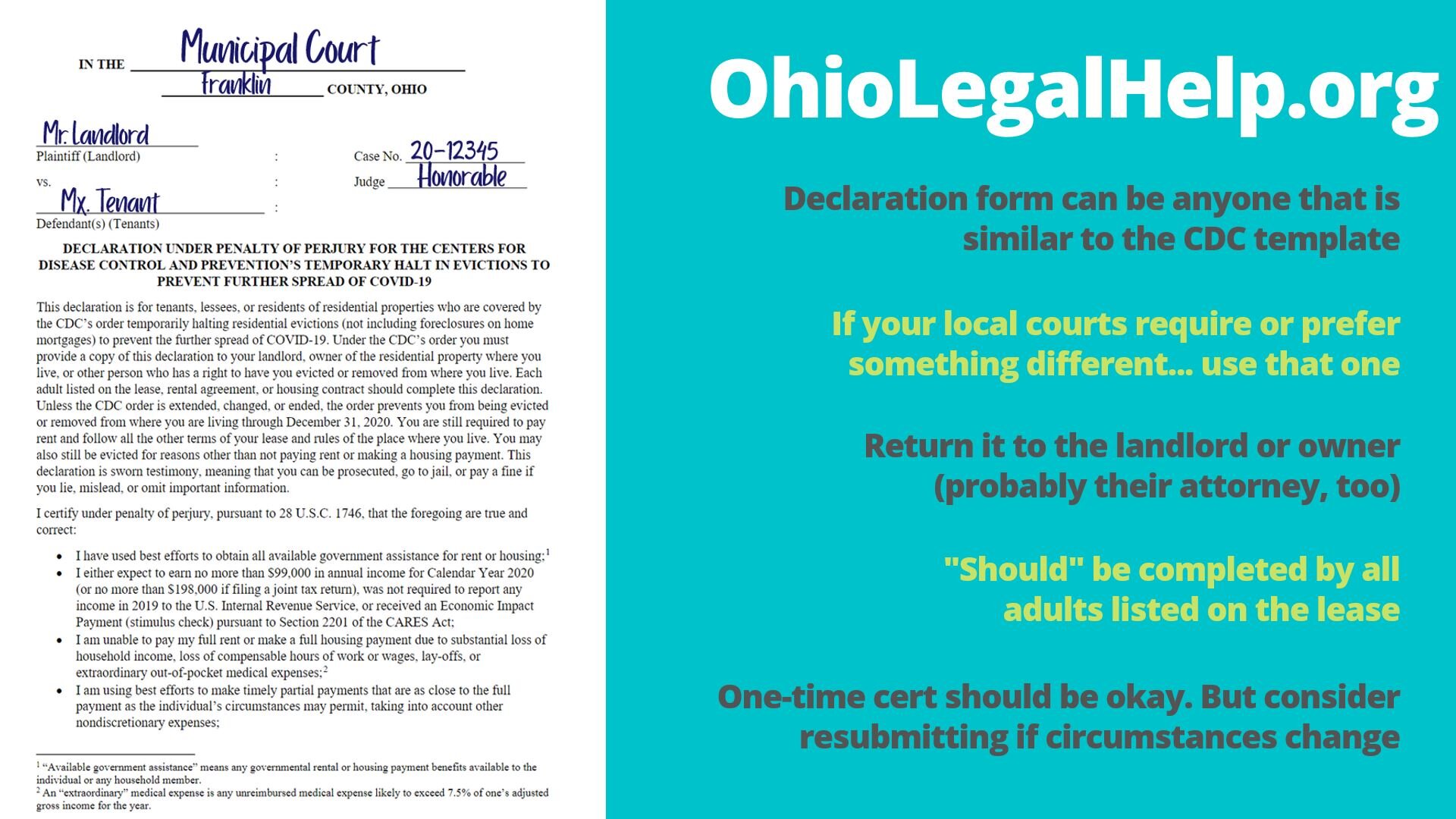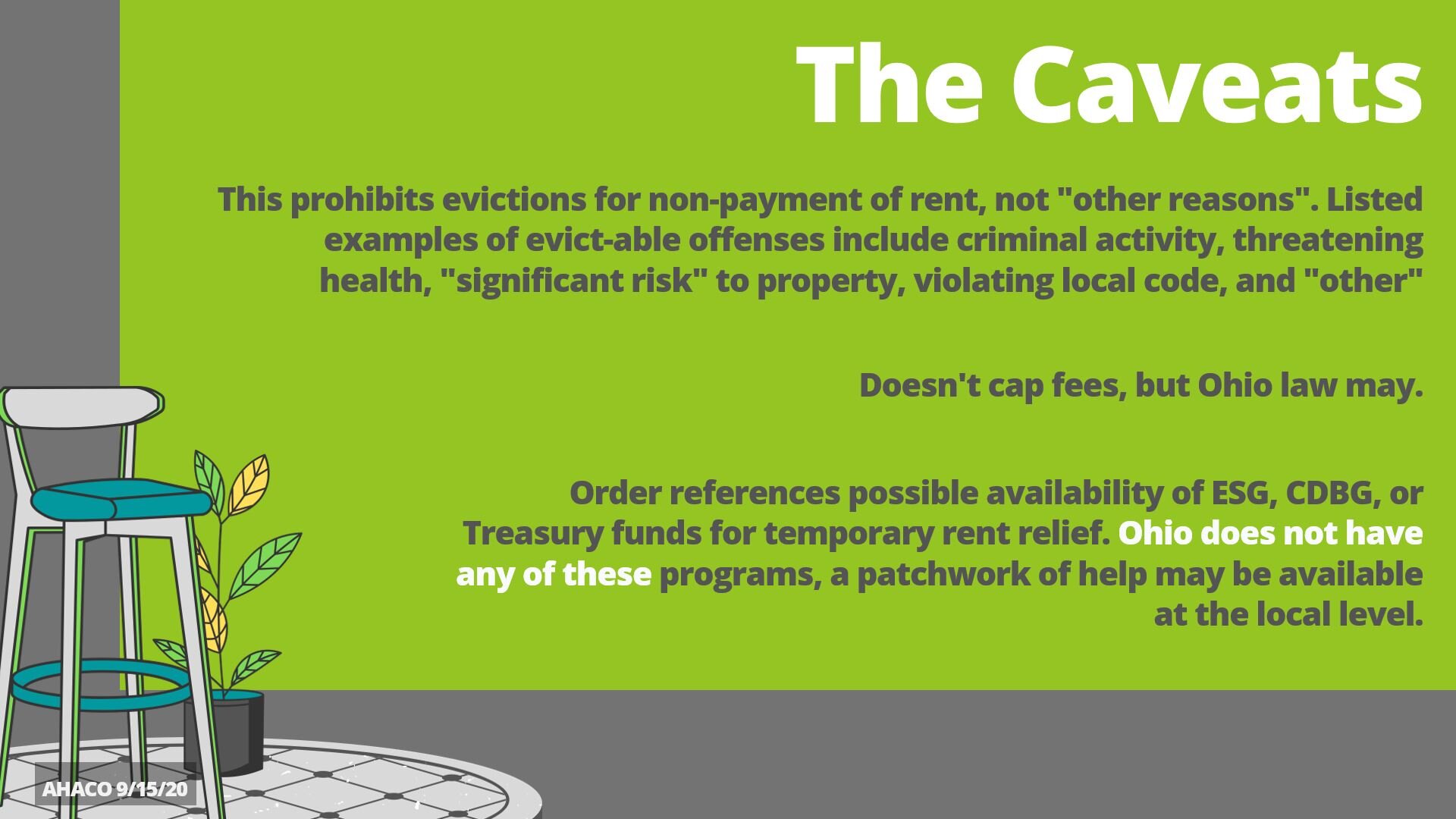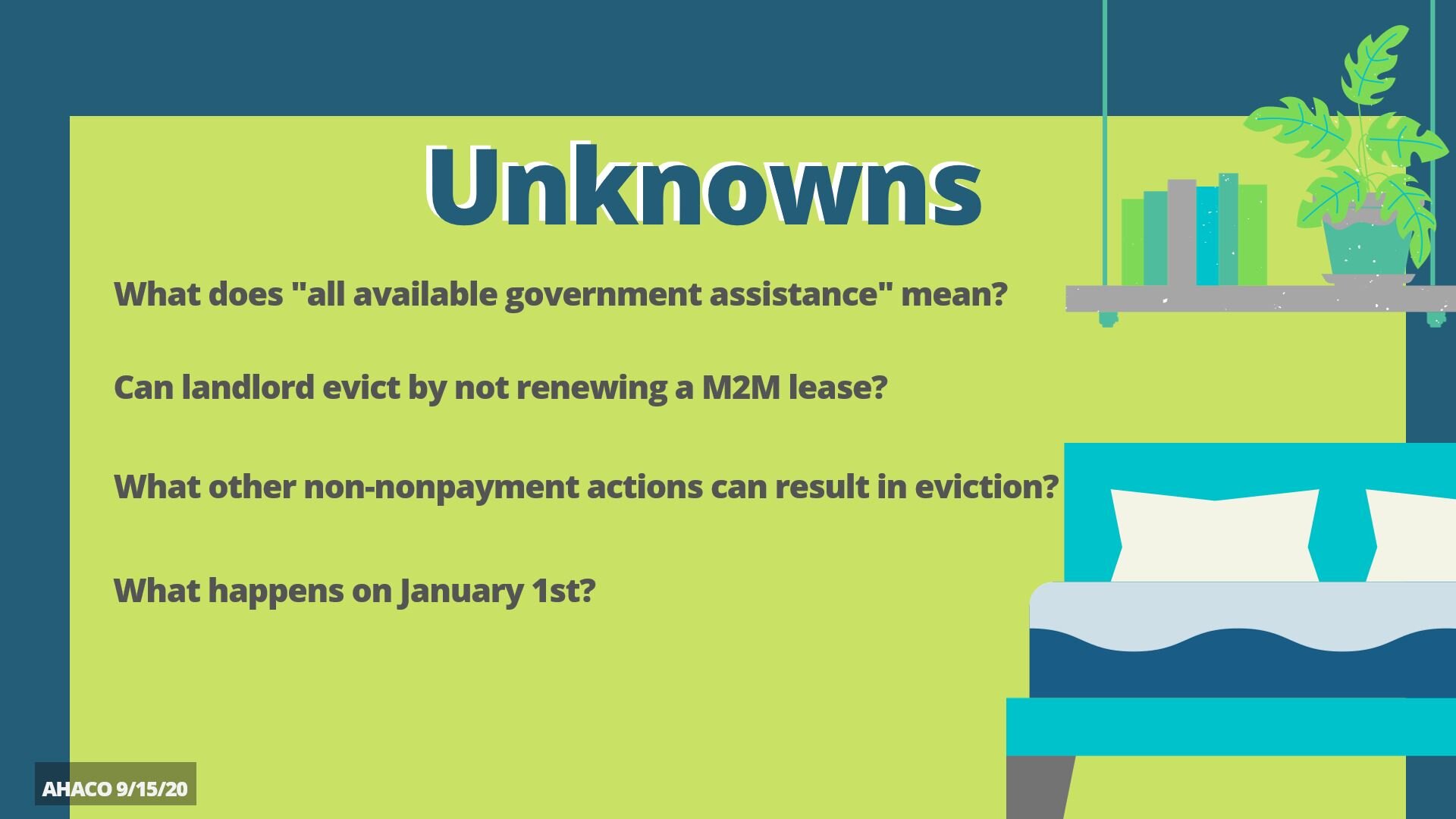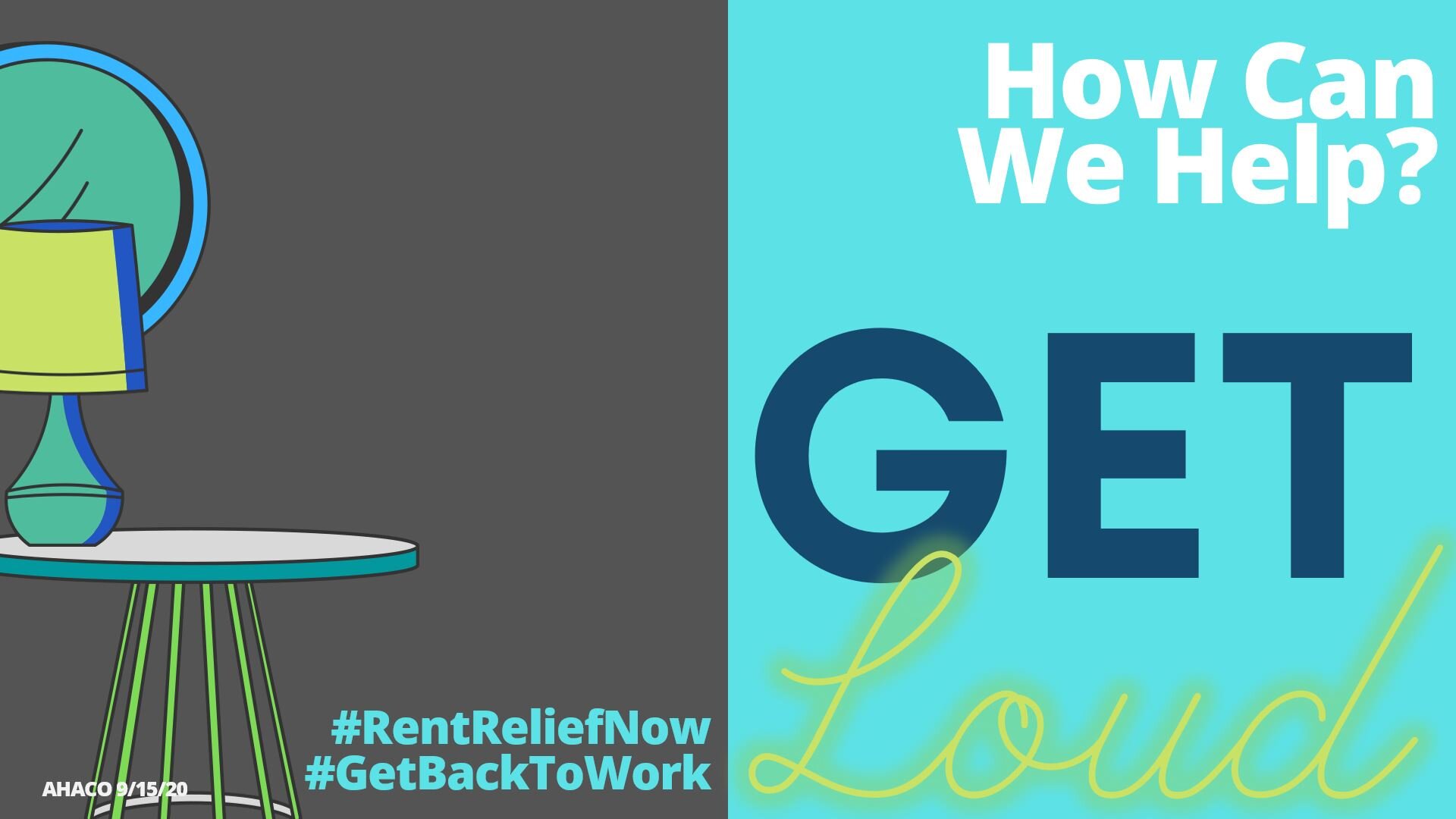This is a guest blog contributed by Carlie J. Boos, Executive Director of the Affordable Housing Alliance of Central Ohio. The information provided in this blog does not, and is not intended to, constitute legal advice; instead, all information, content, and materials are for general informational purposes only. If you or someone you know needs legal assistance, please visit OhioLegalHelp.org to find your nearest legal aid office.
By Carlie J. Boos, Esq., Executive Director, Affordable Housing Alliance of Central Ohio
In early September, the CDC ordered a temporary halt in residential evictions to prevent the further spread of COVID-19. In the sweeping declaration, the CDC recognized that keeping people housed and preventing evictions is a vital social distancing measure and an integral part of any health strategy to slow the spread of the novel coronavirus. Other research proves this too: McKinsey, for instance, found that severe housing problems increase the coronavirus death risk by 4.5 times, more than any other socioeconomic indicator they studied. Another model from the University of Pennsylvania estimated that a 2% monthly eviction rate would translate to a 13% increase in COVID-19 transmissions.
The order, which became effective on September 4, 2020, makes clear that a landlord shall not evict any qualifying person from any residential property through December 31, 2020 for nonpayment of rent. While this order is extraordinarily broad, protecting as many as 40 million Americans that are struggling to make ends meet, it is also a measured response to extraordinary circumstances. As advocates, it is vital that we educate renters about their rights under this order and help them activate them.
While a step in the right direction, this moratorium will not prevent a housing meltdown. All this does is postpone an eviction crisis until New Year’s Day, which hopefully buys our elected officials time to grapple with the disaster that lies ahead and provide the desperately needed rent relief to keep our housing market solvent. By itself, this order does not provide any economic relief for tenants or property owners. Instead we are on a collision course that could mirror the Great Recession, where landlords’ growing inability to pay their mortgages cascades into property tax delinquencies, municipal budget shortfalls, lowered school district revenues, and stock market volatility. This is the dooms day scenario that destabilizes the entire country.
Who qualifies?
It’s important to note that this order is not automatic, tenants must opt into the protections by filing a declaration of eligibility with their landlord or property owner. Renters can use the form the CDC provides, or any substantially similar one (I personally like the one from OhioLegalHelp.org because its easily filed with courts during an eviction hearing). All adults who are listed on the lease should also complete the declaration.
Before filling out this form, tenants must try to find government help for paying their rent. This may include applying for Section 8 Housing Choice Voucher benefits or applying for local rent help (if you’re in Franklin County, visit www.ImpactHopeFund.org now, a list of other county’s aid programs can be found on COHHIO’s website).
To honestly fill out the form, renters need to certify a few things. The first is income eligibility. The CDC eviction moratorium covers nearly all low- and moderate-income renters, defined as those who meet one of three income tests: (1) they expect to earn $99,000 or less in 2020 (or less than $198,000 if they filed joint tax returns); (2) they were not required to report income to the IRS in 2019; or (3) they received an economic stimulus check under the CARES Act.
There are additional renter criteria in the declaration form, too, such as requirements that:
They used best efforts to obtain all available government assistance for rent or housing;
They are unable to pay full rent or make a full housing payment due to substantial loss of household income, loss of compensable hours of work or wages, lay-offs, or extraordinary out-of-pocket medical expenses;
They are using best efforts to make timely partial payments that are as close to the full payment as the individual’s circumstances may permit, taking into account other nondiscretionary expenses; and
If evicted they would likely become homeless, need to move into a homeless shelter, or need to move into a new residence shared by other people who live in close quarters because I have no other available housing options.
Understanding the CDC Eviction Moratorium (Slideshow)
Because this form must be signed under penalty of perjury, honest is key here. Tenants should also keep proof that they delivered the declaration to their landlord, for instance, by sending it via certified mail or taking a photo of themselves handing it to the landlord. While the order doesn’t necessarily require it, it may also make sense for tenants to keep proof handy that met the requirements to which they’re certifying, like keeping a receipt for partial rent payments and proof they submitted applications for help. If a tenant ever must go to court, they should print and take these documents with them.
Exceptions & Unknowns
One of the biggest limitations of this CDC order is that it only protects tenants who are being evicted for reasons not paying rent. How courts will interpret this is still open for debate, so tenants who are being evicted for “other” reasons, like nonrenewal of a monthly lease, should contact an attorney for help. This means that there is plenty of room for local courts to interpret all or parts of the order differently. Legal challenges to the order’s validity are already being litigated. We will certainly keep an eye on these, but it’s worth noting that there was legal opposition to many local moratoria, too, but so far, every single one of those challenges has failed, keeping the eviction protections in place.
What’s Next?
If we do not act now, January 1st will mark the beginning of yet another national tragedy. Tens of millions of people, including up to half all Ohio renters, will be at extreme risk of eviction, displacement, and homelessness. But this is not an inevitability. We. Can. Stop. This.
To truly protect our families and our homes, the federal government and the State of Ohio must commit to comprehensive disaster rent assistance. We need $100 billion to stem this tide nationally. That’s a big number, for sure, but it’s just a sixth of what has already been pledged to help businesses weather the storm. We know our families deserve that same respect.
Call your elected officials today and tell them your housing story. Tell them about your struggles and your values, tell them what scares you and what drives you. And then ask for their help in protecting the Ohio that we love. It is their job to serve us, but we have to give them guidance to do it right.
For any additional questions and to follow the latest news, visit www.AHACO.org, follow us on Facebook and Twitter, or email me at carlie@AHACO.org


